Undersea memorials to loved ones also may help revive Florida’s dying coral reefs
Jeffrey Pace loved the water.
As a teenager, the Orlando native would take frequent trips with his family to New Smyrna Beach. In his 20s, he became an avid water skier. When he and his wife Debbie had kids, they would take week-long boat trips in the family’s cabin cruiser, sleeping below deck on voyages through the Florida Keys or the South Carolina coast.
So last April, when Pace stopped responding to treatment for his pancreatic cancer and moved into hospice care, he knew how he wanted to be memorialized. “He told me he wanted to be made into a reef,” said his wife, Debbie.
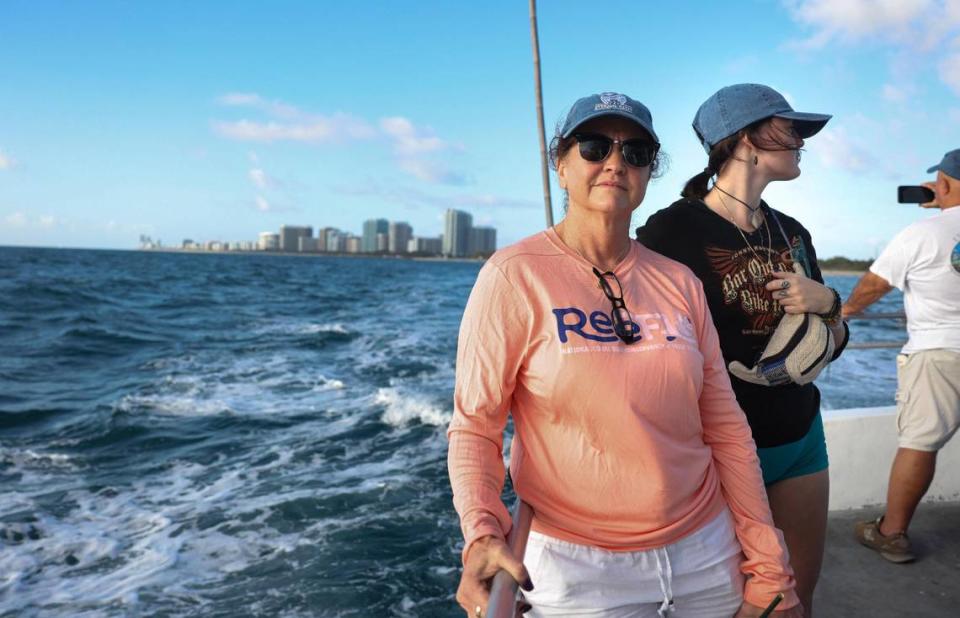
She found a nonprofit company called Eternal Reefs that offers to do just that: The firm places the cremated remains of loved ones within concrete structures called “reef balls,” which it lowers into the ocean at artificial reef sites, where coral can grow over them and turn them into habitats for fish.
Headquartered in Sarasota, Eternal Reefs is the biggest company building reef memorials for mourning families. They’ve placed memorials for 4,000 people at 30 sites around the coastal U.S., from Houston to Miami to Long Island, New York. These structures promise to treat one symptom of climate change already all too evident in South Florida: disappearing coral reefs. The company says the memorial reefs expand habitat for coral and create new homes for fish and other sea creatures.
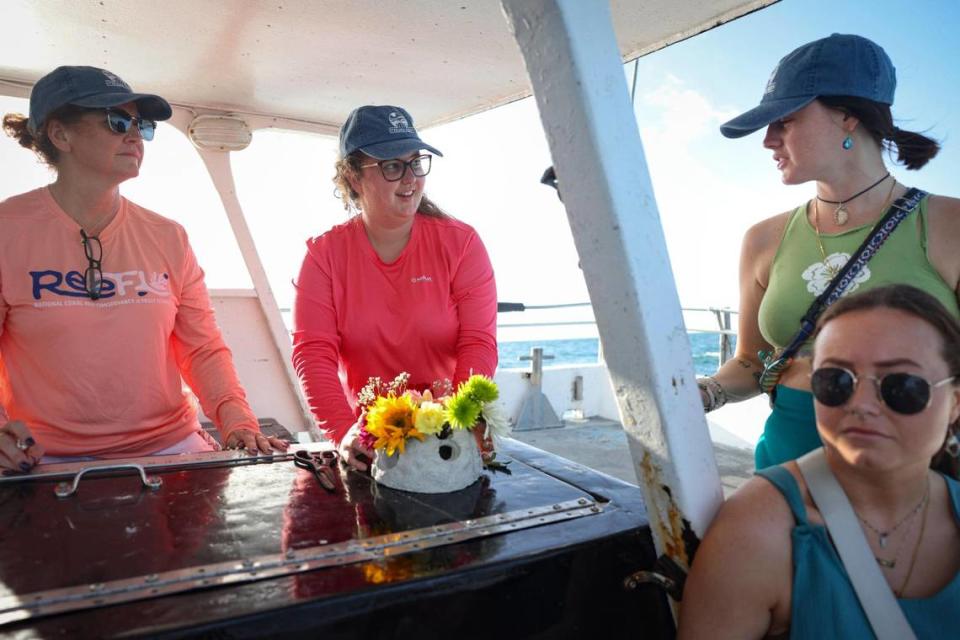
Pace died June 29, 2022. On March 24, his family went to the Bill Bird Marina in Haulover Beach to watch workers cast his remains into concrete. The family decorated Pace’s reef ball with meaningful mementos, including his boating license, a shell his son Aiden found during a family beach trip and a bracelet commemorating a 25th wedding anniversary trip to the British Virgin Islands.
Three days later, they came together for a day on the water to commemorate Pace’s life. Along with two other families, they boarded a charter boat and watched as a barge lowered each loved one’s reef ball into its final resting place at a reef near Haulover Beach.
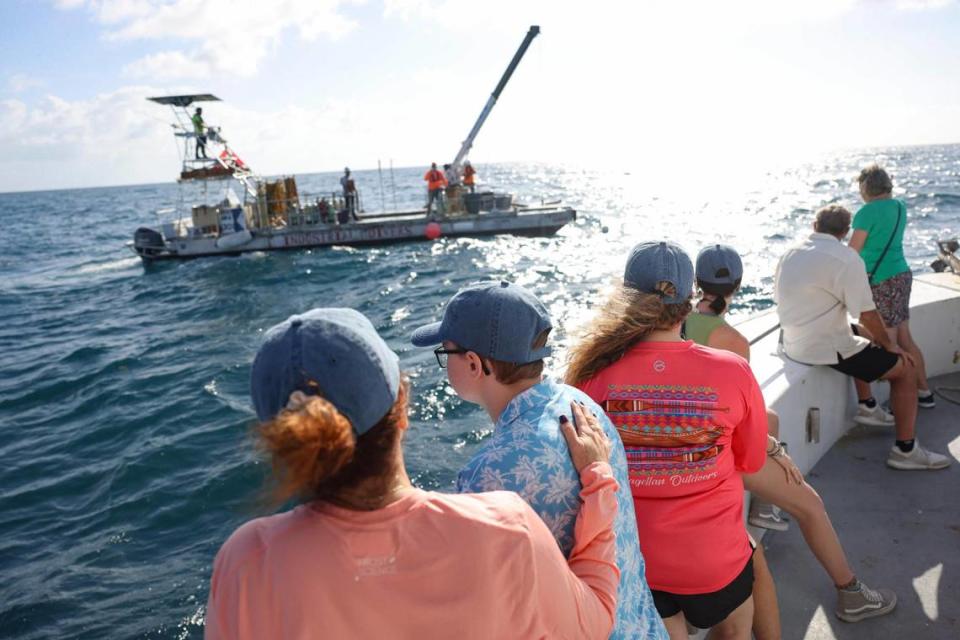
“As a family member, it’s amazing,” said Debbie. “My kids aren’t going to go to a grave site. But now, any time we’re in the water, he’s with us.”
Around 9:45 a.m., the barge crew lowered Pace’s reef ball to the sea floor, 40 feet below the surface. “Jeffrey Pace is now safely a part of the Golden Beach Reef Site,” Eternal Reefs general manager Shelby Davis announced over the boat’s PA system.
As the boat sailed over the reef, Pace’s family scattered flowers over the surface of the water.
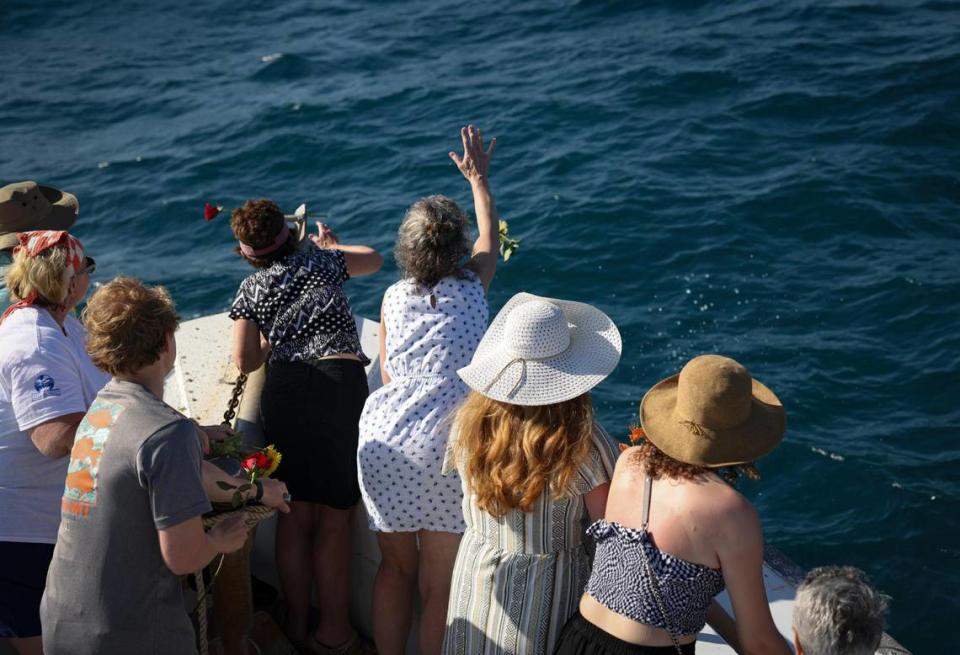
Expanding artificial reefs
Eternal Reefs is a spin-off of the nonprofit Reef Ball Foundation, which has placed more than half a million reef balls in over 60 countries since its founding in 1993. These reef balls aren’t memorials for the dead, but environmental restoration projects: They’re designed to create habitats for coral and oysters.
Don Brawley, who co-founded the foundation and helped design the original reef ball, started Eternal Reefs in 1998 after the death of his father-in-law, Carleton Palmer. Following his father-in-law’s wishes, Brawley mixed Palmer’s cremated remains with concrete to form the first memorial reef ball. He placed it at an artificial reef site near Sarasota. Then he launched Eternal Reefs to offer the same funeral service to others.
The reef balls Eternal Reefs uses are hollow, holey half-domes of concrete that range in size from 3-foot-wide, 600-pound balls to 6-foot-wide, two-ton behemoths. They’re made with a special concrete mix that has a neutral pH level and a grippy surface to allow coral and other small sea creatures to grow. Their “ball” shape is designed to keep them from moving or toppling over under the pounding of waves and storms.
Eternal Reefs makes the reef balls ahead of time, but invites families to help mix their loved ones’ cremated remains with concrete to form a small concrete mound the company calls a “pearl.” Families place the pearl at the center of a reef ball before decorating it with mementos.
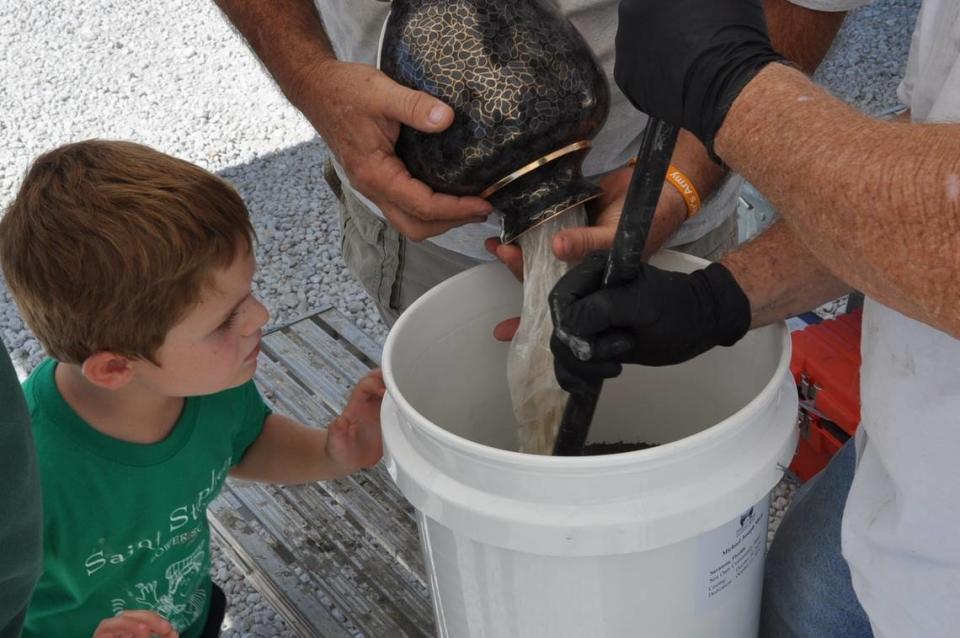
Depending on the size of the reef ball, families pay between $3,500 and $7,500, plus an extra $1,000 to participate in the reef ball casting and ride on a charter boat to see the reef ball placed in the ocean. Larger reef balls can accommodate the remains of up to four people. The smallest option is big enough for the remains of a person and their pet.
Roughly half of the 3,000 memorial reef balls Eternal Reefs has placed have gone into the Silvertooth Reef near Sarasota. The rest are placed at artificial reef sites along the Gulf coast and the eastern seaboard in places like Pensacola, Florida, Myrtle Beach, South Carolina, and Ocean City, Maryland.
At each site, Eternal Reefs has reached out to local authorities to ask for regulatory approval to expand their existing artificial reefs. “These regulators get to say at the end of the year, ‘We built another reef and it didn’t cost taxpayers a penny,’” said Eternal Reefs CEO George Frankel. “So they’re very willing to work with us.”
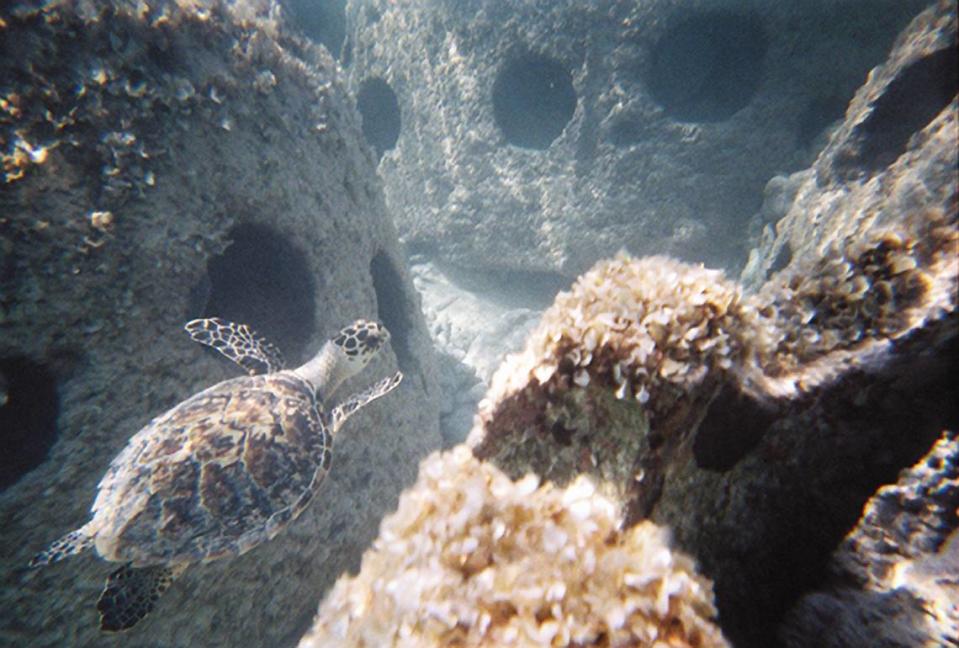
Aside from Eternal Reefs, there are some artificial reef sites, including one in Mexico Beach, Florida, that work directly with families to place memorials on their own reefs. Memorial Reefs International places reef balls at permitted sites in Mexico, Canada, the U.S. and one in Venice, Italy.
Another firm, Neptune Memorial Reef, is incorporating cremated remains into 5,000 concrete columns that will eventually form a 16-acre underwater replica of the lost city of Atlantis three miles east of Key Biscayne.
‘Public reefs with private money’
The reefs are an eco-friendlier choice than the old tradition of scattering ashes at sea. Companies like Eternal Reefs and Memorial Reefs International say their funeral services can help restore reef ecosystems threatened by climate change and a host of other issues.
Can probiotics cure Florida’s ailing coral reefs? Tests show it works on devastating disease
The decline of Florida’s reef system has been dramatic over the last half-century but the problem is global. Roughly half of the world’s coral reefs have died since the 1950s, according to a 2021 paper from a team of American and Canadian scientists. Climate change has made the oceans warmer and more acidic, leading to mass bleaching events that kill corals.
But when it comes to reducing carbon emissions, the benefits of reef burials are murkier. Cremating human remains and mixing concrete to create reef balls generates some of the carbon emissions that contribute to climate change — a fact that the memorial reef industry acknowledges.
“There is no memorial option, not one single memorial option, that is carbon-free,” said Frankel, the Eternal Reefs CEO. “The only way that would work is if you left the body where it fell.”
Other alternatives, including green burial, may come closer to zero emissions. In addition to the emissions that come from cremation, each pound of concrete produces nearly a pound of carbon emissions, according to the National Ready Mixed Concrete Association, meaning that even the smallest reef ball creates the carbon emissions equivalent of driving an average 650 miles.
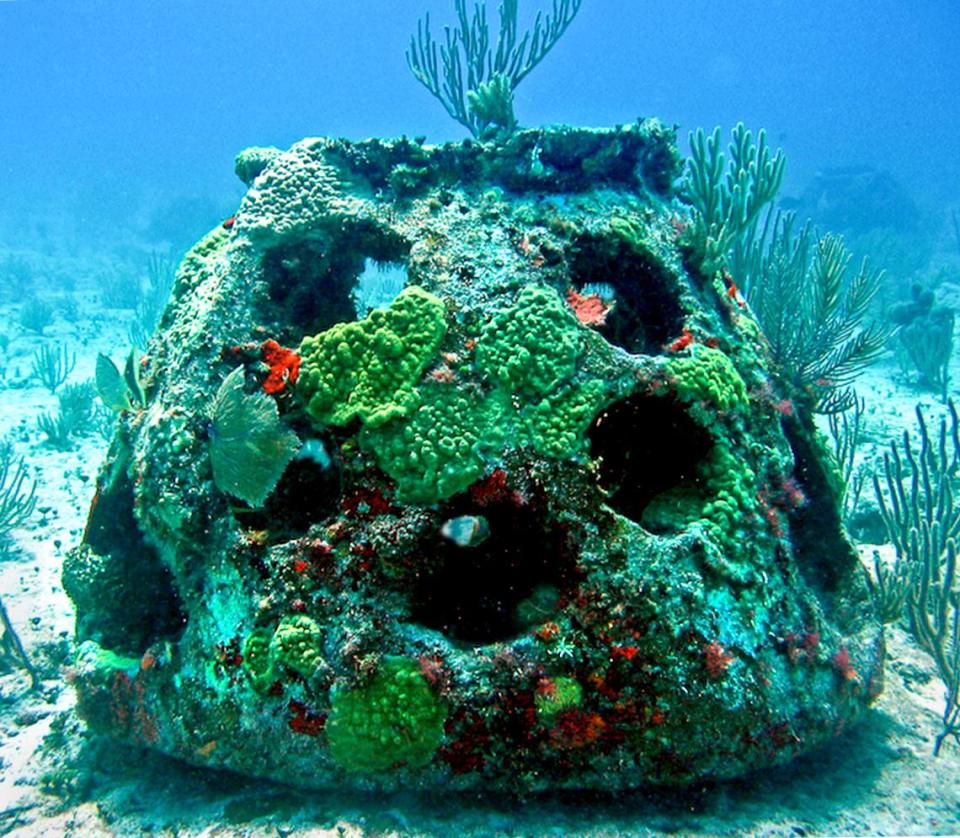
But Frankel argues Eternal Reefs offset that impact by bankrolling the construction of new reefs. “Our goal is to build public reefs with private money,” he said.
“After the reef has matured, and there’s coral on it, and there’s life on it and fish are living in it, we believe that the biomass that it creates every year is going to offset the carbon footprint,” said Danny Santiago, director of sales for Memorial Reefs International.
A sendoff at sea
Then there’s the emotional impact for families who want to memorialize loved ones on the water.
Eternal Reefs services don’t look much like a typical funeral. For their final goodbyes, families dress casually in shorts, light colors, and broad brimmed hats. They stand together in the sun.
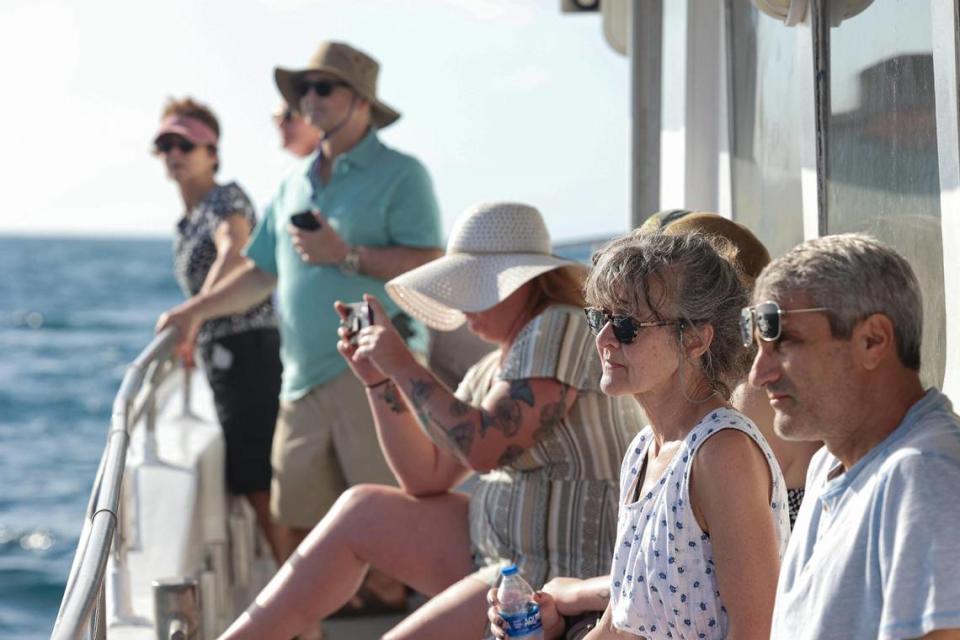
“There’s no dark room, no whispers and no open hole in the ground,” Frankel said.
On the water near Haulover Beach, as the boat headed back to the marina after Jeffrey Pace’s reef ball was placed in the Golden Beach Reef Site, Pace’s daughters Mackenzie and Lexi sat together near a railing on the bow.
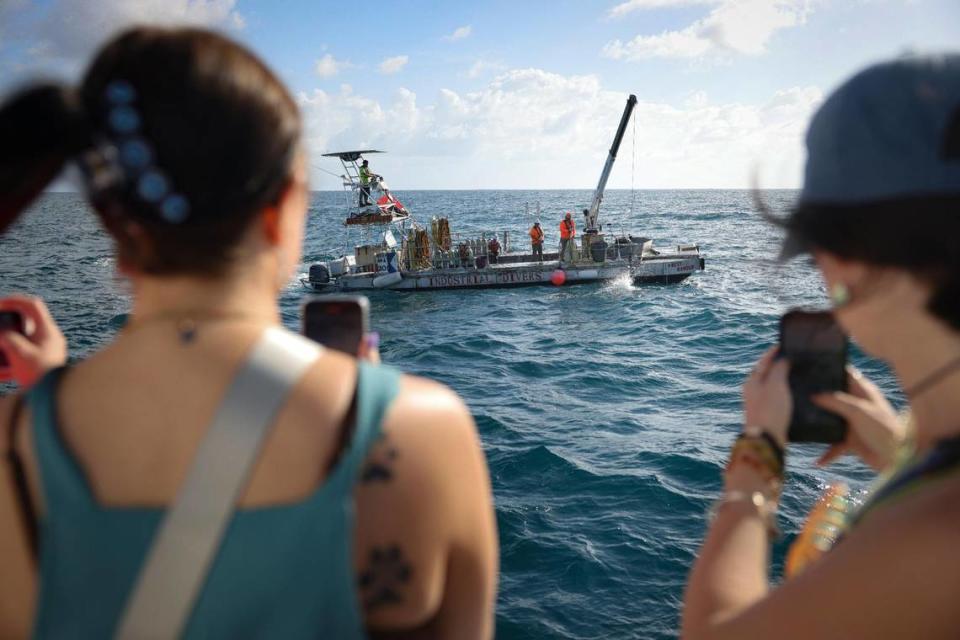
A flying fish leapt out of the waves alongside the boat, and Mackenzie pointed it out to her sister. They talked about their plans to get matching coral reef tattoos with their mom when they got back home. “It’ll be a small reef tattoo that incorporates a reef ball,” Debbie Pace said.
As the boat pulled up to the dock at the Bill Bird Marina, Debbie stopped to think about what her husband would have thought about the ceremony. “I’m sure he was very pleased with how everything went,” she said. “It was just very beautiful and it was a perfect symbol of him.”
This climate report is funded by Florida International University, the Knight Foundation and the David and Christina Martin Family Foundation in partnership with Journalism Funding Partners. The Miami Herald retains editorial control of all content.

